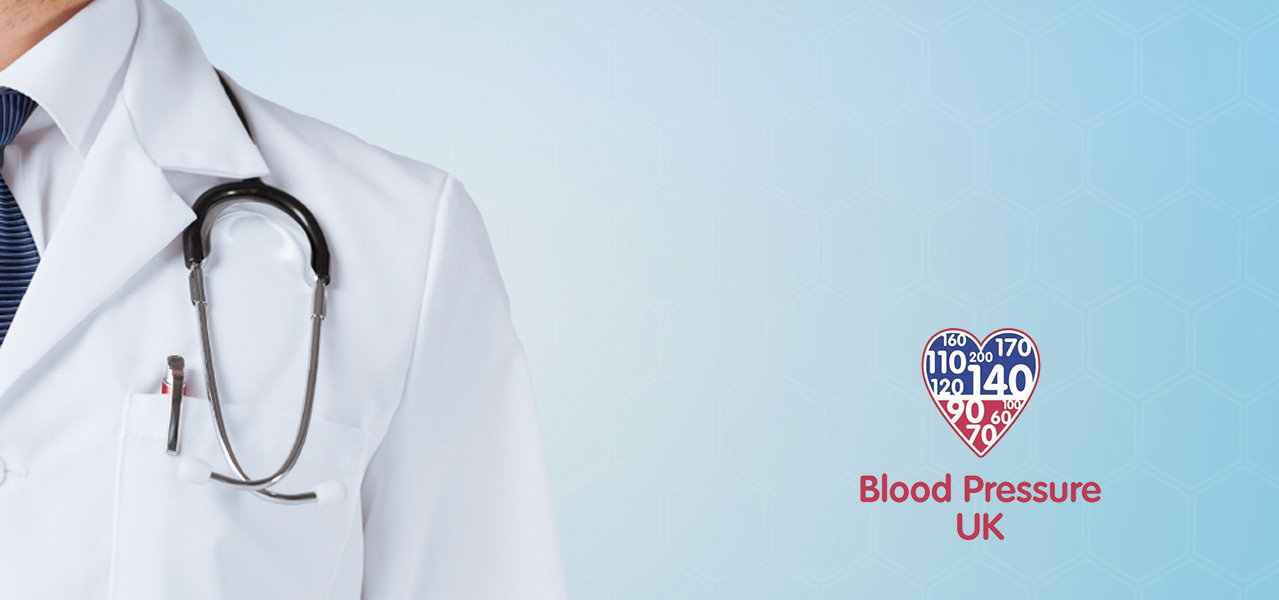09 February 2023

White Coat Hypertension: what is it, how do we diagnose it and do we need to treat it?
The days when doctors wore white coats are long gone, but White Coat Hypertension is here to stay, and continues to be a significant problem. Blood Pressure UK explain why…
What is White Coat Hypertension?
White Coat Hypertension is a phenomenon where individuals appear to have high blood pressure at the doctor’s surgery, or in other clinical settings (hence the term ‘white coat’) but had a normal blood pressure at home or when they are going about their daily lives.
Although definitions vary slightly depending on which country you are in, a person is thought to have White Coat Hypertension if their blood pressure in a clinical environment (also known as ‘office blood pressure’) is persistently high and meets the criteria for diagnosis of hypertension – but outside a medical setting, they have a normal blood pressure. In the UK, this would mean an ‘office blood pressure’ of 140/90mmHg or higher, but an average home reading of 135/85mmHg or less.
Why does it happen?
It is thought that being in a clinical setting can set off a stress response in some individuals – the so called ‘fight or flight’ response. This in turn increases stress hormones such as adrenaline which causes heart rate and blood pressure to rise.
Although many individuals who have this reaction do feel very anxious or stressed when visiting their doctor, there are some who don’t feel stressed, but still have evidence of the white coat effect, which can be confusing.
It is estimated that around one third of those with high blood pressure in a clinical setting have White Coat Hypertension, and it appears more common in women, older adults, and those recently diagnosed with hypertension.
How is it diagnosed and treated? And why is it so important to identify?
The use of ambulatory or home blood pressure monitoring is essential in diagnosing White Coat Hypertension. In other words, confirming whether someone with high blood pressure readings in clinic, truly has sustained hypertension, or whether their blood pressure is only high in clinic.
Guidelines currently suggest it’s not necessary to treat patients who have White Coat Hypertension with medication, as these individuals don’t appear to be at higher risk of CVD (cardiovascular disease) such as heart attacks and strokes. However, it’s important to note that a lot more research is still needed in this area, as data from clinical trials is lacking.
It’s incredibly important to identify those with White Coat Hypertension, as they risk being misdiagnosed with high blood pressure and prescribed unnecessary life-long treatment with blood pressure lowering medication, raising their potential risk of side effects.
We also know that those with White Coat Hypertension have around a fourfold increased risk of developing high blood pressure in the future – therefore meaning it’s important to monitor them with repeat ambulatory and home blood pressure monitoring on an annual basis.
24-hour ambulatory monitoring vs home blood pressure monitoring: what’s the difference?
-
24-hour ambulatory monitoring
A healthcare professional fits you with a special device which measures your blood pressure over a 24-hour period, usually every 30 minutes during the day and every hour at night. The readings are then uploaded to a computer which produces a detailed report including average blood pressures for the day and night.
-
Home blood pressure monitoring
You use a home blood pressure monitor to measure your own blood pressure twice a day, preferably morning and evening, at roughly the same times each day, for 7 days. Readings can be recorded, either in a paper diary or electronically via a computer programme or app. The average blood pressure over the 7-day period is then calculated.
There is still no consensus on which method of blood pressure monitoring is better, and both can be used to make diagnoses of White Coat Hypertension. In general, many people may prefer home monitoring as it’s more accessible, better tolerated and can be used for ongoing blood pressure monitoring at home – so you can keep an eye on your numbers over time. However, your doctor may choose ambulatory blood pressure monitoring to provide a more detailed analysis of your blood pressure throughout the entire day.
If you need further advice on how you can take your blood pressure from home, either speak to your GP or click here for easy to follow instruction and resources.
For more information on why you need to know your numbers, and the impact high blood pressure can have on your overall wellbeing, visit the Blood Pressure UK website or Facebook and Twitter.
